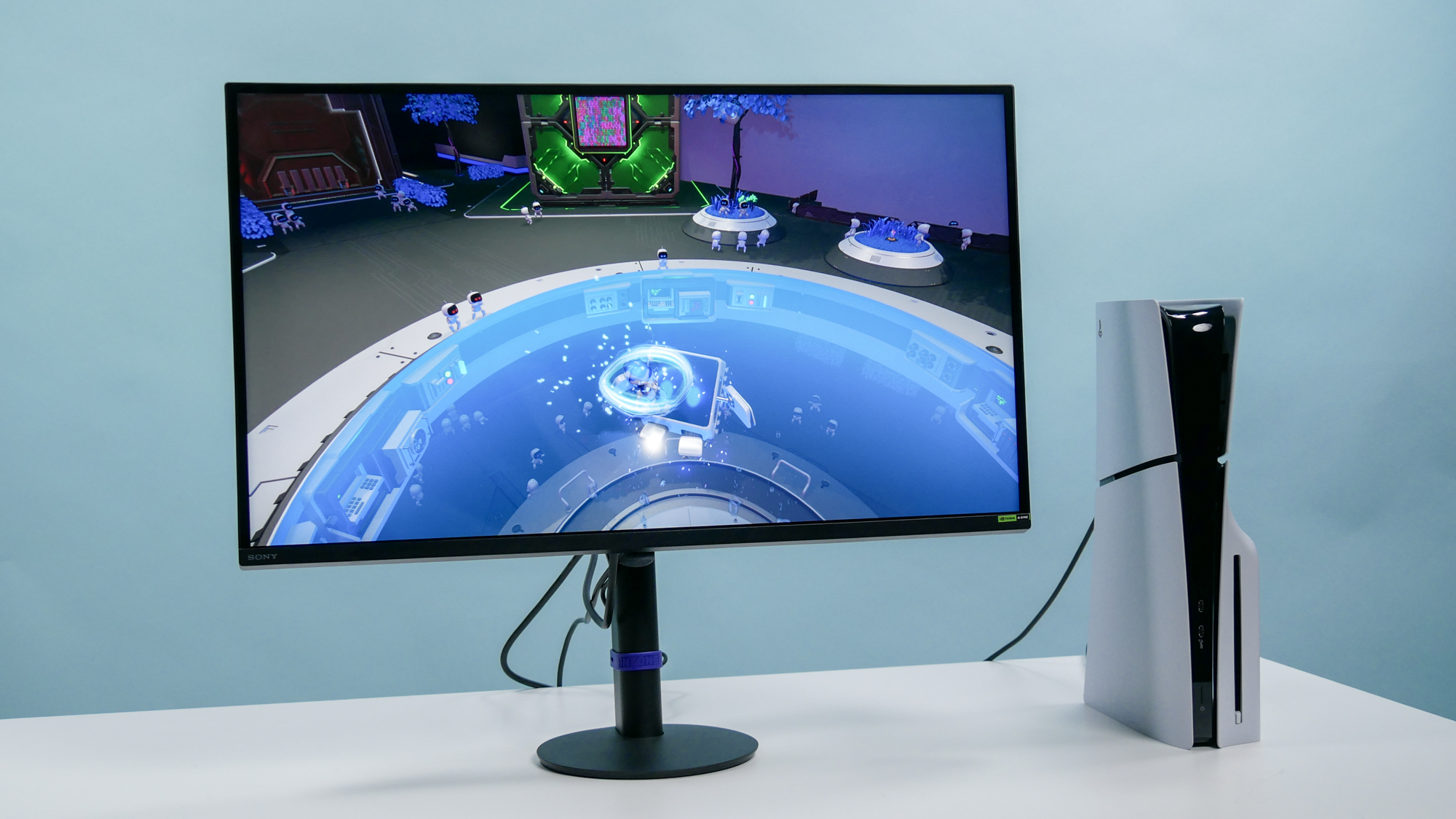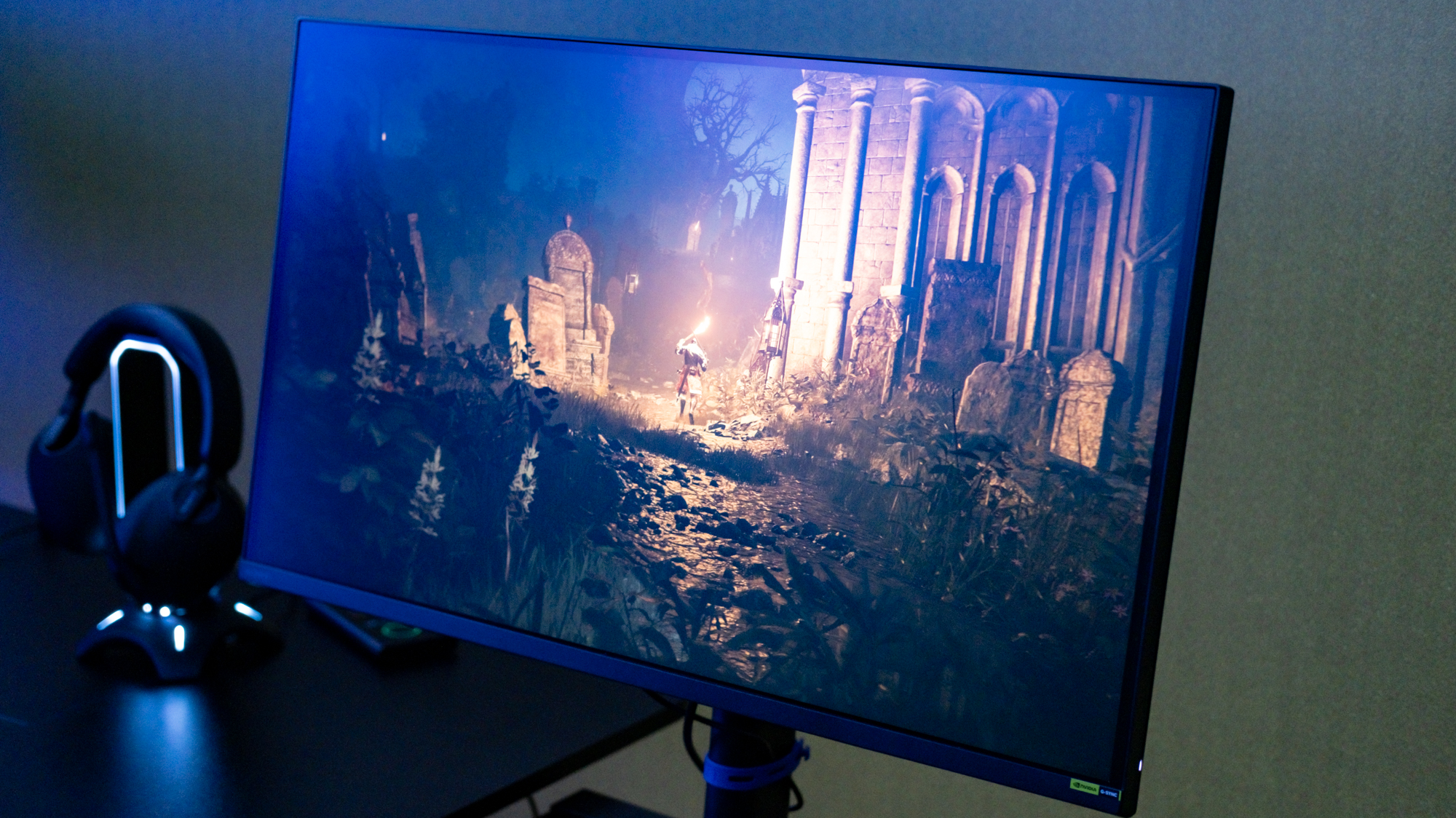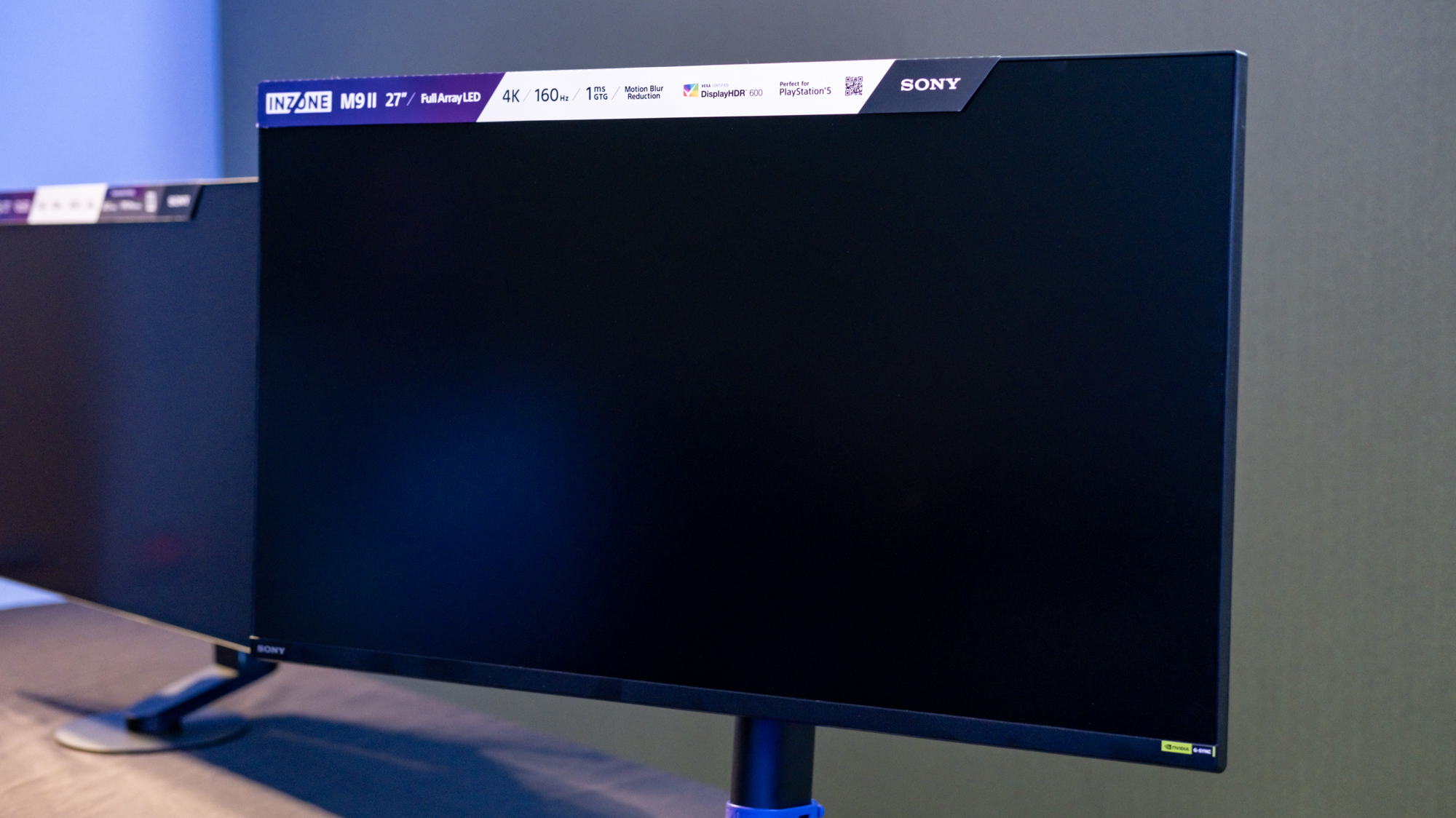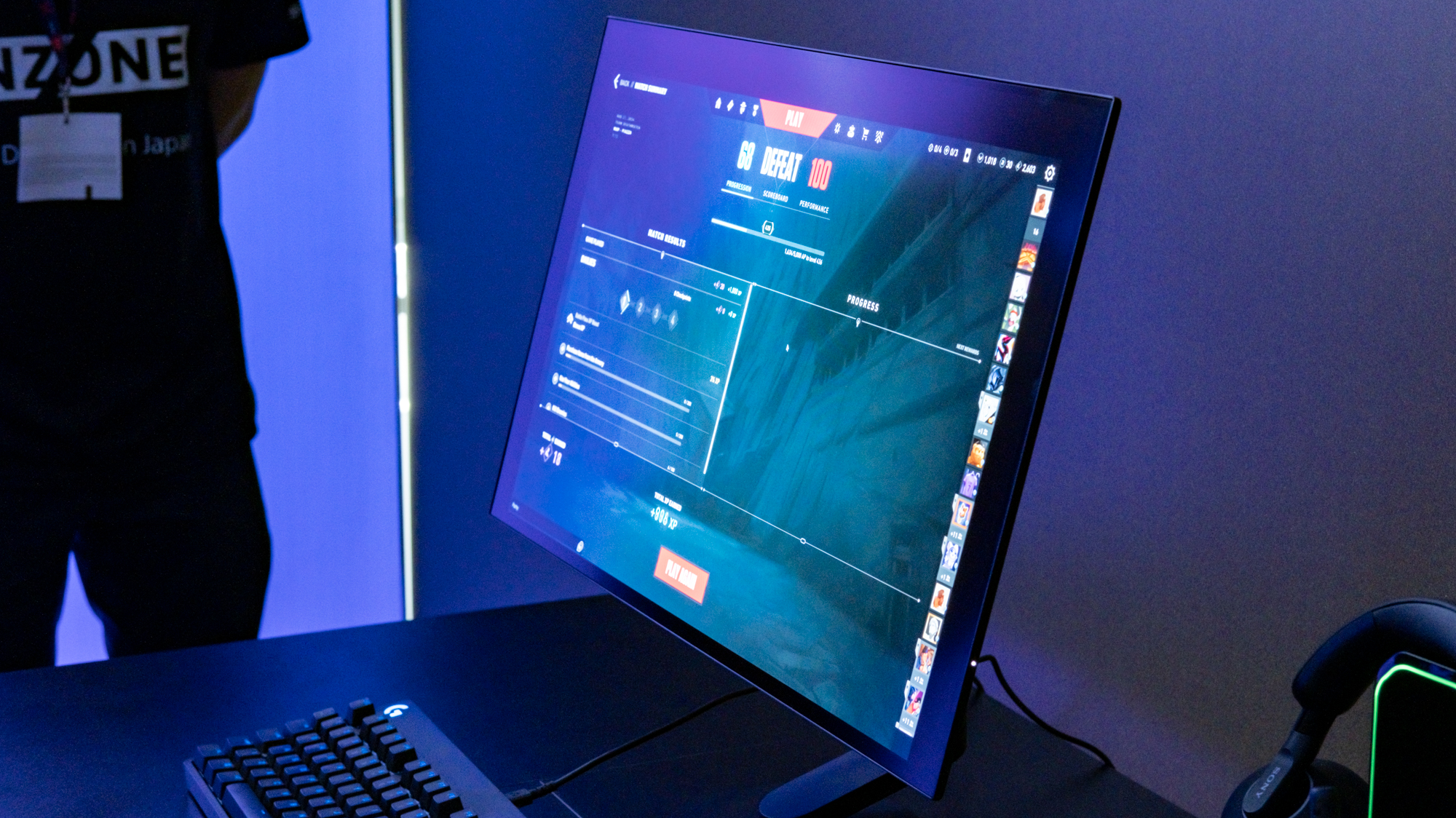
Back in 2022, Sony’s youngest division, Inzone, which makes non-PS5-specific gaming hardware, released its first gaming monitor: the Sony Inzone M9. We absolutely loved the M9, awarding it 4.5* and spot among our pick of the best gaming monitors. We praised its sharp 4K display, bold colors and smooth 144Hz refresh rate. We also liked its quirky and unique stand design, and while it was obviously styled to appeal to PS5 gamers, we appreciated the clear pitch towards PC gamers in the performance department.
Now, Inzone is back with the sequel, the M9II, which sports a pared back design that looks distinctly less PS5-oriented. It also features some updated specs to improve performance, addressing some of the issues we had with the original M9.
I got to take a first look at the M9II at Gamescom 2024, alongside the monitor’s pro-tier sibling, the M10S (aimed at professional esports players). Here are my first impressions.
First look: Sony Inzone M9II

The Sony Inzone M9II is a high-end gaming monitor with a 160Hz refresh rate and 27-inch 4K LED display. The M9II has been engineered with FPS, MOBA and RPG gamers in mind, who play at home, perhaps even competitively, but aren’t pros. It’s for the discerning enthusiast and is pitched at both PC and PS5 gamers. The M9II carries on the M9’s legacy, building on the original’s features, albeit with a redesigned, pared back aesthetic.
Sony Inzone M9II first look: Key specs

Unlike its uber-specced elite gaming sibling, the M10S, with its 460Hz refresh rate, 0.3ms response time and array of esports-oriented features, the M9II is aimed at enthusiasts rather than pro gamers and specced accordingly. The M9II’s MSRP is $799/£899/€999, so $100 cheaper than the original M9, although the original model could be had for a lot less. The M9II will launch in October 2024.
The M9II’s 27-inch 4K IPS LED display sports a 160Hz refresh rate versus the original M9’s 144Hz rate, thanks to the incorporation of DisplayPort 2.1 versus 1.4. Response times are the same across both models, 1ms GtG (Gray to Gray, or how long it takes for a pixel to change from one color to another), which should provide enough blur reduction for non-competitive home gamers. Adaptive Sync and G-Sync are also supported to reduce tearing by syncing the monitor to GPU frame rates.
The panel’s backlight has local dimming, meaning individual areas of the picture can be dimmed to increase contrast levels and help with things like subject detection. Brightness is up from the original 600nits on the M9 to 750nits on the new model, which should also help with contrast, enabling brighter whites.
With 10-bit color, the M9II can render over 1 billion individual hues, and Sony rates the monitor with 95% DCI-P3 coverage, for a wide color gamut — this is of course something we’ll test once we get our hands on a review sample. Sony also says the internal speakers (still 2x 2W) are improved over the original M9, which we’ll again put to the test later down the line.
Sony Inzone M9II first look: Extra features
Carried over from the M9 are the SDR are a range of gaming assist features, including a display crosshair that can’t be detected by games, an on-screen FPS counter and black point adjustment for increased visibility in dark scenarios without blowing out lighter areas.
There are also a range of HDR and SDR modes for various gameplay or media types. SDR presents include FPS and MOBA modes to adjust gamma and color levels to better suit those games and, for example, make it easier to detect opponents early in certain color or contrast environments. These fall short of the FPS Pro and FPS Pro+ modes in the M10S, though. There are also several HDR present, including modes for general gaming, RPGs and cinema, plus an sRGB SDR mode for color accuracy if using the monitor for production work.
Sony Inzone M9II first look: Design
The M9II employs a much more sober aesthetic than the original M9, which was clearly aimed to be sat next to a PS5, with its white geometric design. The new model is clearly a step away from PS5 alignment with a heavier weighting towards PC gaming setups.
The M9II employs a much more sober aesthetic than the original M9, which was clearly aimed to be sat next to a PS5
The M9’s standout design element was undoubtedly its tripod-style stand with a steeply angled front arm, which I think looked awesome. The M9II, in understated gray, features a generic stand with a much more shallow-angled arm, sat above a low profile circular base. The shallower arm angle, while less interesting, should prove better for everyday use, as it means the display won’t slide as far forward and backward when being moved up and down. Just like the M10S, the stand base looks way too small to support a 27-inch monitor at first glance, but is actually incredibly stable. The small base profile (much smaller especially than the original M9 design) allows for a high degree of versatility in set up, allowing other hardware to be moved close to the monitor or even over the base itself. Naturally, the monitor also features a VESA mount for custom mounting.
The display swivels 180 degrees, a big improvement over the M9 which didn’t swivel at all. However, there’s still no 90 degree flipping for using the monitor vertically, one of our complaints with the original M9. Unlike the M10S, there’s no rear cable management built into the back of the panel. While reducing the overall depth of the monitor, this will potentially make for a messier desk. There is a rubber cable management band around the arm, though.
Sony Inzone M9II first look: Initial impressions

We weren’t given any play time with the M9II, so it’s difficult to tell how well this monitor will truly fare against its predecessor and market competition. Sony mainly devoted our briefing session to the elite M10S pro esports monitor, and only showed us a prerecorded few-minute clip of some Elden Ring gameplay, which was more than a little frustrating. The excuse was that they only had one PC — apparently not one senior engineer knew how to swap a DisplayPort cable.
On specs alone, though, this monitor looks like a great step up over its already fantastic predecessor, the Sony Inzone M9, which earned a 4.5 rating in our review. The M9II should be more than capable for all but the very highest echelons of FPS and MOBA players thanks to its high 160Hz refresh rate and 1ms response times, while its improved 4K panel should suit RPG and slower-paced games down to a tee.
While Sony’s board and accountants may find this difficult to see, the rest of the world doesn’t (entirely) revolve around the PS5, and it’s refreshing to see the Inzone division recognizing that. The move away from the white PS5-esque aesthetic and TV-style stand to a more sober, desk-friendly design are actually welcome changes. They demonstrate that Sony has come back to reality about who this monitor’s core audience really is — PC gamers — and has made changes to the M9’s quirkier elements to better suit that audience in everyday use, while not pricing the monitor out of reach to PS5 gamers. As a PC gamer myself who has been having issues with his gaming monitor for a while, I’ve gotta be honest, the Inzone M9II is now top of my watch list.







